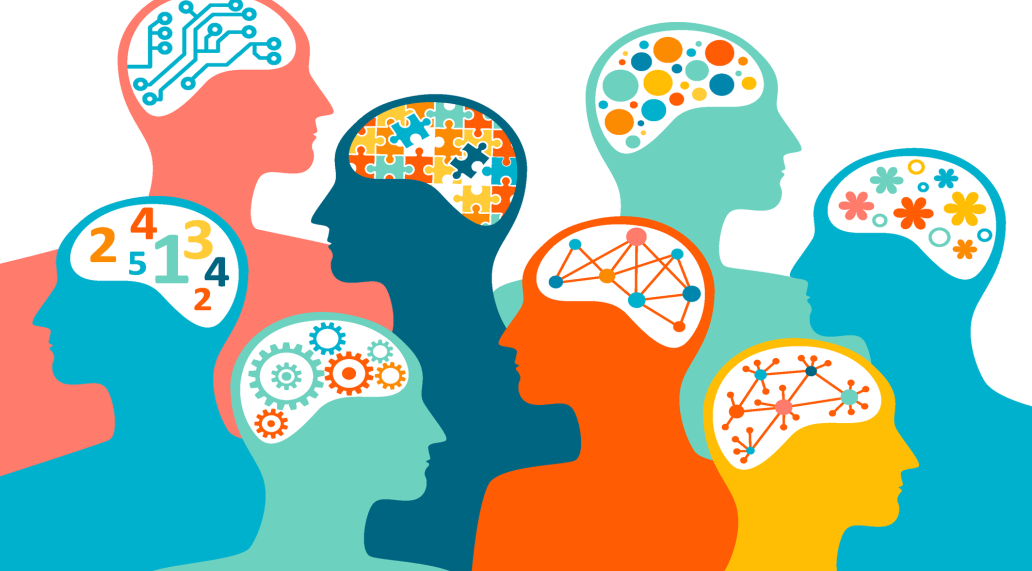
Neurodiversity in the Workplace: A Personal Perspective
In recent years, awareness of neurodiversity—the recognition and appreciation of different neurological conditions such as autism, ADHD, dyslexia, and others—has significantly broadened. This shift is increasingly reflected in the workplace, where diversity is not only tolerated but welcomed as a source of strength and innovation. Using the story of Alex (name changed), a neurodiverse individual navigating their unique challenges and opportunities in an increasingly neurodiversity-aware work environment, this article will highlight the facets of neurodiversity, the support structures, and the systemic approach in the modern workplace.
What does neurodiversity mean and where are its origins?
The term "neurodiversity" was first coined in the 1990s by Australian social scientist Judy Singer and refers to the diversity of human brains and mental functions. It represents the recognition and appreciation of people with different neurological characteristics, such as autism, ADHD (Attention Deficit Hyperactivity Disorder), dyslexia (reading ability disorder), and much more. In contrast to earlier medical models that viewed deviations from the norm as deficits or disorders, the neurodiversity movement emphasizes the idea that neurological diversity is a natural and valuable part of human society.
The origins of the neurodiversity movement can be traced back to the work of autistic individuals who resisted a pathologizing view of their own identity and experiences. Since then, the movement has expanded to other neurological differences and advocates for the rights and dignity of all neurodiverse people.
The story of Alex
Alex, with a diagnosis from the autism spectrum, enters the working world with a mix of hope and concern. While Alex's extraordinary abilities in pattern recognition and attention to detail are apparent, social interactions and an overstimulating office environment present significant hurdles. Alex's journey is emblematic of the experiences of many neurodivergent individuals who are often overlooked or misunderstood in traditional work environments.
Early career years are a time of learning and adjustment for Alex. Interviews and group discussions, standard procedures in many hiring processes, feel like insurmountable barriers.
Even after entering the workforce, the problems continue. He increasingly experiences that certain tasks require more effort from him than from his colleagues. It is almost impossible for him to remain focused and relaxed in a room with many people. Often, he still manages to function, but this demands so much energy from him that he regularly feels exhausted. Loud noise environments and different sensory stimuli affecting him simultaneously are also extremely taxing. On the other hand, when he is alone, he can concentrate wonderfully and work much more persistently and meticulously than his colleagues. Often in these moments, he experiences a genuine flow.
He receives feedback from his supervisor that he is acting clumsily or even unwisely in dealing with his team and with customers. He often asks directly what a statement means, probably because he cannot otherwise properly interpret what is said. However, this tends to unsettle the person he is speaking with. Alex's desire for a work culture that recognizes and supports his individual differences is growing.
The turning point comes when Alex's company begins to recognize the importance of neurodiversity and introduces targeted initiatives to support neurodiverse employees.
As part of this, he receives personal coaching and develops ideas on how to better handle the issue at the workplace. He distances himself from the plan to constantly optimize his compensation patterns in order to optimally fulfill every task assigned. Instead, he wants to openly discuss his strengths and weaknesses with his boss.
What Alex learns in his coaching is resource orientation. This approach, developed in the late 1970s, no longer demands that all people must meet certain standards but rather appreciates the individual strengths and potential of each person and applies them accordingly. With increasing awareness of diversity – including in the area of neurodiversity – this way of thinking can be beneficial for everyone involved. However, it requires a willingness for dialogue on equal footing, for transparency and openness, and the will to find solutions together.
Alex uses his coaching for self-reflection and develops an overview, a kind of score card, with relevant factors that support or hinder his work ability. On an impact scale from -3 to +3, he then assigns a weighting to each of the factors. For example, he rates a loud noise level with a value of -3, meaning it is very significant and obstructive.
He subsequently uses his scorecard for every new challenge. With his personal assessment and weighting, he gets a good overview of how well the conditions and work content suit him. Afterwards, he can discuss with his boss or external clients to determine to what extent certain aspects are negotiable and adaptable to his needs.
At this point, it should be noted that Alex's scorecard solution is likely to be completely different from that of a person with another neurodiverse condition, such as ADHD. This highlights the importance of an individual, resource-oriented approach.
Not only does Alex with his neurodiverse traits receive support. His supervisor and team are also sensitized in a training session to gain a better understanding of their colleague and to interact with him more confidently.
However, organizational adjustments such as flexible work arrangements, adapted communication channels, and a considerate design of the work environment also enable Alex to reach his full potential.
Opportunities for Alex and the Company
With the changes made, new doors are opening. Alex's ability to solve complex problems and recognize details that often elude others becomes an invaluable asset to the team. Projects that benefit from Alex's unique perspectives lead to innovative solutions and help highlight the company in its industry. Alex's success is a vivid example of how the inclusion and appreciation of neurodiversity can not only improve the working life of individual employees but also make a significant contribution to the company's success. It also encourages all those affected to confidently engage in dialogue with colleagues and superiors and to seek external support in this process if necessary.
Conclusion
The story of Alex illustrates the transformative power of neurodiversity initiatives in the workplace. By creating supportive structures and promoting an inclusive company culture, businesses can not only overcome the challenges faced by neurodiverse employees but also harness their unique talents and perspectives. In a time when the workplace increasingly values diversity and inclusion, recognizing neurodiversity offers an opportunity to expand the boundaries of what we consider possible and to create a more inclusive, innovative, and equitable future for all.
The development towards more neurodiversity is closely linked to resource and solution orientation as well as appreciation. It requires the ability to change perspectives and empathy. All these are aspects that are also found in the systemic consulting and therapy approach, which understands people in interaction with their environment. By creating an environment that emphasizes each individual's strengths while providing support in challenges, all employees can thrive.
From Kerstin Blumoser
Sources:
Spectrum Compact 22/2023 – Neurodiversity – Diversity in the Brain
Neurodiversity in Our Working World tbd* Last accessed on 04/05/2024
Flow@Work: Lead with the Brain in Mind – Attract and Retain the Best People - Friederike Fabritius (2022), Campus Verlag


